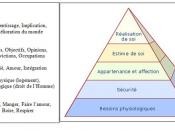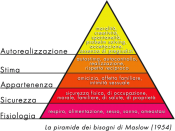What is motivation?The motivational process is universal as all organisations through various strategies attempt to motivate employees in order to attain high performance and reach organisational goals.
There has been many definitions given from various books but to simplify this, let's think of it from a business standpoint:a)Refers to the forces within a person that affect the direction, intensity, and persistence of voluntary behavior [1,p.134];b)Is the inner state that causes an individual to behave in a way that ensures the accomplishment of some goal [2,p.382];c)Giving of a reason to act: the act of giving somebody a reason or incentive to do something;d)Authusiasm: a feeling of interest or enthusiasm that makes somebody want to do something, or something that caus such a feeling [3, p.6].
e)The motivational process in management can also be treated as a need satisfying process.
Many motivation theories have been studies from many business theorists mainly on how to encourage workers to do more work in less time, more effectively, efficiently and be happy about doing it.
Peter Drucker has defined effectiveness as "doing the right things" and efficiency as "doing things right". By this explanation, managers have the responsibility to choose the right goals and ensure that they could be achieved through proper implementation with optimum used of resources which means the most important asset of the company, the people - human resources.
Another studies explained that summaries motivation as below:Content/need theories - are primarily concerned with what motivates peopleProcess theories - offer a more in depth understanding of motivation looking at how people are motivatedTo fully understand motivation, let's take into account the evaluation from major types of theory.
Maslow's hierarchy of needsAbraham Maslow, developed the concept of needs, which classifies five (5) levels of needs ranging from the bottom to top, and...


